














June has been an exciting month for the industry. Firstly, I attended MOVE 2022 at the ExCel and it was great to see a few familiar faces, as well as some more interesting and innovative start-ups and businesses that are making the electric vehicle space even more inspiring.

It was also great to see so many amazing EVs on display at Goodwood Festival of Speed. Unfortunately, I was unable to attend in person, but I did keep across the weekend, and I was blown away by some of the EVs that were on show. I must admit, I was suffering from a serious case of FOMO that weekend!

One of the cars that everybody was keen to see at the Festival of Speed was the Polestar O2, a high-powered roadster concept that the manufacturer says is a future ‘hero’ car for the brand. The Polestar 5 was also on display at Goodwood and these cars, as well as a few others, are all included in our special Polestar feature on page 17.
Elsewhere in this issue, we have our interview feature with Jordan Brompton, co-founder of myenergi, an in-depth review of the Volvo C40 Recharge, and we break down the top ten electric vehicles scheduled for release next year. As always, we also have our Formula E and Extreme E coverage, guest columns and much more inside.
As we prepare to get this issue of to print, we are also busy preparing for another busy month in July with lots of amazing content planned and we can’t wait to share it with you. We will have a review of the Cupra Born, a review of a fully electric Porsche 356 from Electrogenic, a first look at the Nissan Ariya and a few other surprises as well, so please do come back next month and be sure to keep your eyes on our website and YouTube channel.



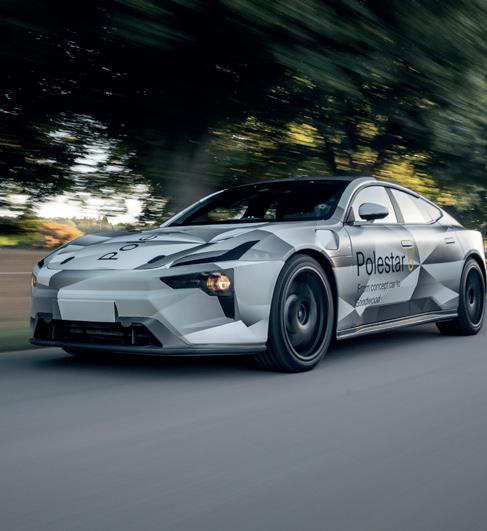
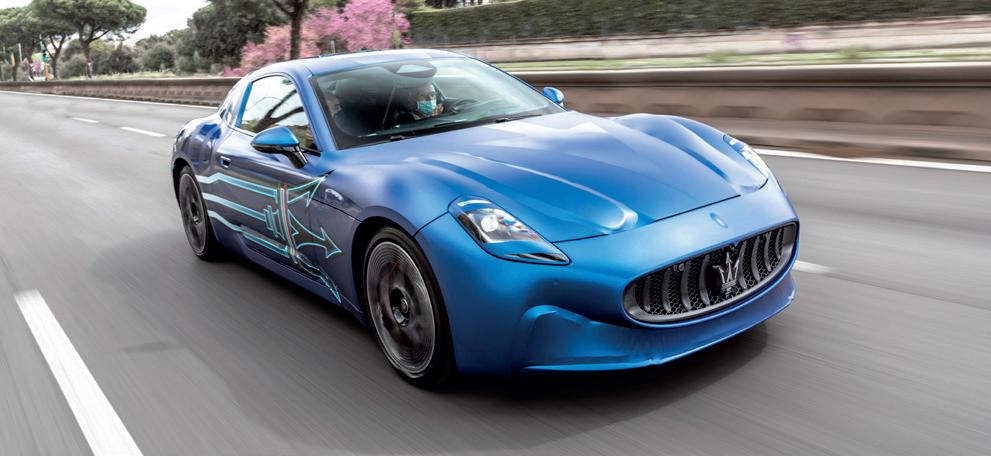
The grant was closed on Tuesday 14th June with immediate effect, with the government saying it will instead concentrate the funding on expanding the public chargepoint network as well as electric taxis, vans, trucks, motorcycles and wheelchair accessible vehicles.
With prospective EV owners once able to claim up to £5,000 back as part of the scheme, it had since been reduced to £1,500, to help alleviate some of the costs associated with making the switch to an electric vehicle.
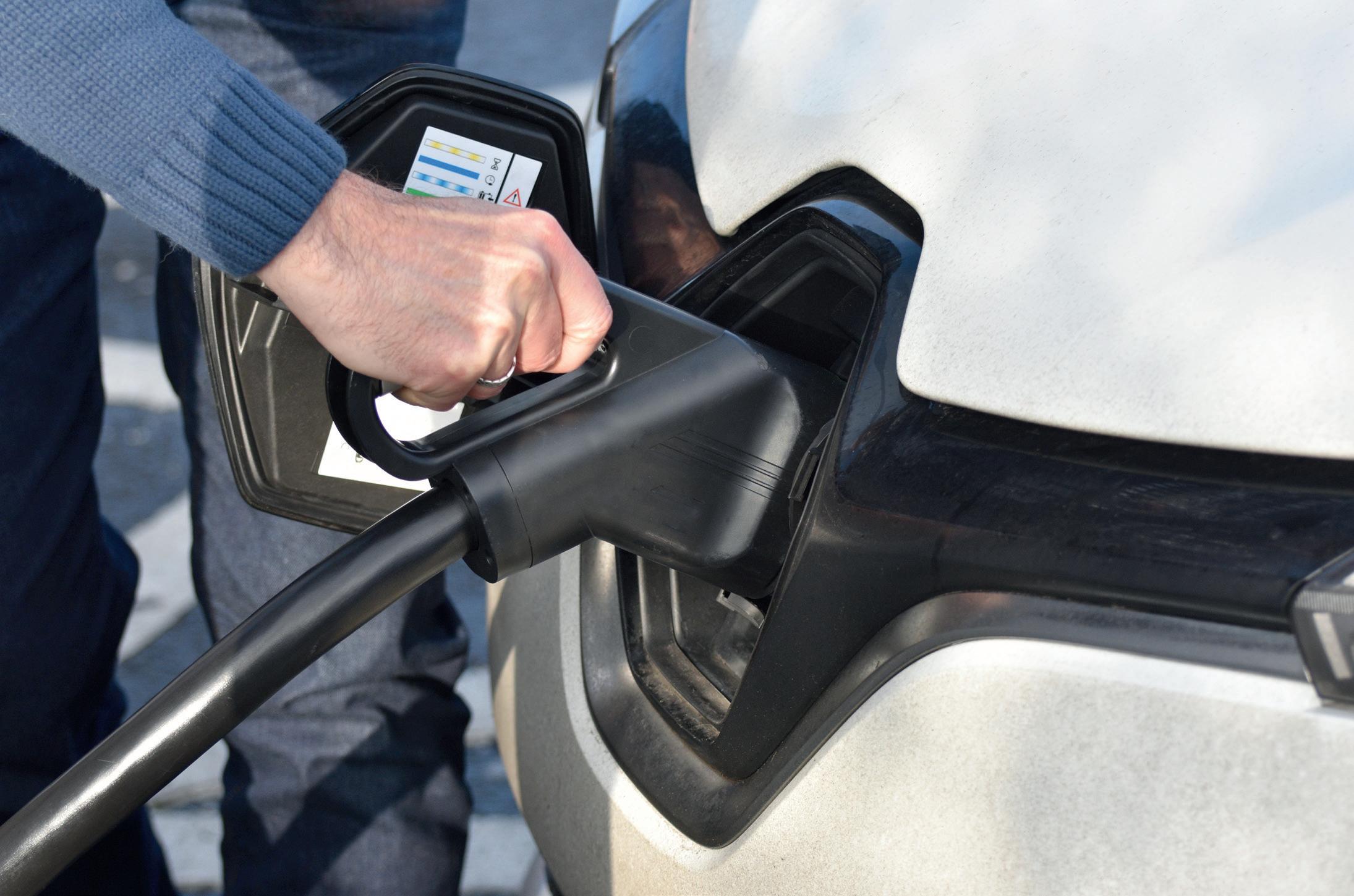
Announcing the decision, the Department for Transport (DfT) said the plug-in car grant was temporary and previously confirmed funding
until 2022-23. It now says £300 million in grant funding will now be refocused towards extending plug-in grants to boost sales of plug-in taxis, motorcycles, vans and trucks and wheelchair accessible vehicles, as announced in the autumn statement.
The shift in focus will also help allow government funding to target expanding the public chargepoint network, helping to eradicate “range anxiety” and ensure the transition to zeroemission transport is easy and convenient for all drivers across the UK. The government has already committed £1.6 billion to building the UK’s public chargepoint network.
The DfT also claimed that significant savings in running costs for electric cars compared to petrol
or diesel equivalents can often exceed the current £1,500 value of the grant.
Transport Minister, Trudy Harrison, said: “The government continues to invest record amounts in the transition to EVs, with £2.5 billion injected since 2020, and has set the most ambitious phase-out dates for new diesel and petrol sales of any major country. But government funding must always be invested where it has the highest impact if that success story is to continue.
“Having successfully kickstarted the electric car market, we now want to use plug-in grants to match that success across other vehicle types, from taxis to delivery vans and everything in between, to help make the switch to zero emission travel cheaper and easier.
The government has scrapped its plug-in car grant scheme in order to focus on expanding electric vehicle charging infrastructure.
The vote upholds a key pillar of the European Union’s plans to cut net planet-warming emissions 55% by 2030, from 1990 levels – a target that requires faster emissions reductions from industry, energy and transport.
Proposals from the European Commission to require a 100% reduction in CO2 emissions from new cars by 2035 were supported, making it impossible to sell fossil fuel-powered vehicles in the EU from then. Attempts to weaken the target to a 90% CO2 cut by 2035 were dismissed.

By using Zap-Map’s EV charge point mapping service and Admiral’s 2021/22 insurance data, the two companies were able to highlight the towns and cities in the UK that are currently best served for the two quickest types of charging points.

The companies’ analysis has highlighted the Midlands as a hotspot for charging your electric car as quickly as possible.
Indeed, the five cities with the most rapid and ultra-rapid chargers are Nottingham, Milton Keynes, Leeds, Birmingham and Coventry. Nottingham currently enjoys a fairly comfortable lead, with a grand total of 122 rapid and ultrarapid chargers at the end of April, over Milton Keynes with 106.
The Midlands has been ranked as the fastest place in the UK to charge your electric vehicle, according to Admiral Car Insurance and Zap-Map.
all
2035
The European Parliament has voted to make sales of new ICE vehicles illegal from 2035 as it aims to become the first carbon neutral continent by 2050.

The conversion kit, aimed at the agricultural sector and landowners, has been in development and extensively tested over the past 18 months on Worthy Farm, host to the Glastonbury Festival.
The kit sees an electric motor bolted to the Defender’s existing clutch bell housing, so the vehicle keeps all its gears. It packs 120 bhp and 235 Nm of torque –comparable power and torque to the original diesel engine. 52kWh of batteries are mounted under the bonnet gives 100+ miles of range on-road and considerably more when driving off-road or around a farm. As standard, the kit is equipped for 7.5kW AC overnight charging via a Type 2 connector. Faster charging can be specified as an optional extra.
GRIDSERVE and Moto are set to open 17 new high-powered electric vehicle charging hubs across London and Bristol.
As part of the two firm’s ongoing partnership, GRIDSERVE and Moto are bringing six new High Power Electric Super Hubs to Moto Severn View and 11 to Moto Heston. Initially, six chargers have been launched at Severn View and 11 chargers
at Heston, with capacity to expand when future demand requires. Supplied by renewable, net zero carbon energy, the 350kW-capable highpower chargers can deliver up to 100 miles of range in less than ten minutes.
Toddington Harper, CEO of GRIDSERVE, said: “We’re building a robust, dependable, nationwide charging network so that anyone, anywhere, can feel confident about driving any type of electric vehicle and have a great charging experience.”

The Mercedes-Benz VISION EQXX has beaten its own efficiency record with a 1,202-kilometre journey on a single charge from Stuttgart to Silverstone.
Electric vehicle charging provider bp pulse has launched its all-new bp pulse home smart charger for domestic EV charging.
Audi is to reuse batteries from its e-tron test vehicles to power and electrify three ‘e-rickshaws’ in India.
Kempower has launched a new adaptive voltage charging solution which allows its chargers to work with EV batteries up to 1000V.
Smart EV charging firm myenergi is partnering with Grimsby Town FC as its official club shirt sponsor for the 2022/23 season.
EV conversion specialists Electrogenic have announced the launch of new ‘drop in’ kits to convert working Land Rover Defenders to electric.
In 2016, Jordan Brompton and her business partner, Lee Sutton, created myenergi to try and change the world of electric vehicle charging. Six years later, myenergi is leading the way for renewable energy electric vehicle charging solutions. In this special feature, Jordan talks to EV Powered about the journey of the company, the challenges it has faced along the way and the importance of home charging in the UK’s transition to EVs.

The vision for myenergi came from a conversation over a bottle of wine. We couldn’t understand why there wasn’t a way for EV drivers to charge their cars via solar panels, so decided to create a product based on gut feel alone. We founded the business in 2016 with nothing – apart from a few good ideas and a serious passion for change.

We spent more than a year getting the basics right. By this point, our savings had all but run out. We ran a crowdfunding round with a target of £40,000, but reached just £10,000.
The picture changed when we met Robert Llewellyn in Orkney. He was filming an episode for his EV YouTube channel and loved our product. He featured us and – from that day on – the phone began to ring.
Since then, we’ve grown from a team of two to a team of 350 and attracted funding from investors Sir Terry Leahy and Bill Currie. We recently shipped our 300,000th unit and beyond the UK we now have a presence in Germany, Ireland, Australia and the Netherlands.
While every day of the myenergi journey has been an exciting adventure, we’ve experienced so many ups and downs along the way. Being an entrepreneur and doing what you love is tough. It’s competitive, it’s challenging, it’s cruel and sometimes it feels like everything wants you to fail.
We’ve been through the rollercoaster of Brexit, component shortages and the pandemic – all in the first five years of our journey – not to mention the premature birth of my daughter. But we’ve
taken risks, overcome obstacles and learnt from our mistakes. Perseverance and a desire to be successful have seen us come out stronger than ever.
If I could roll back time and give myself advice at the start of the journey, it would be to expect the unexpected. Things can get pretty sketchy at times, they won’t go the way you want and you’ll be pushed to your absolute limits. Having the tenacity, drive, determination, fight and passion to overcome anything thrown at you will be so important. But don’t give up and don’t lose faith. The early mornings, long nights, headaches and heartache will all be worth it.
We believe in the electric revolution and commit to pioneering a simple transition to renewable energy. It might sound simple, but it really has been the driver behind everything we do!
Having spent so long perfecting the technology, so much money on R&D and so many sleepless nights taking the product to market, launching zappi was our first major milestone. It not only set the precedent for what our business was capable of – from both a product design and capability perspective – but also put us on the map as a major player in the eco-smart EV charging marketplace.
More recently, being handed the keys to our 15,000 sq ft flagship eco headquarters was another major milestone. Designed from the ground up to set the standards in energy efficiency, it’s a fantastic building and really shows what we’re all about. From our humble beginnings making products in a countryside workshop and shipping them from the local Post Office, it’s amazing to think how far we’ve come.
What is the story behind myenergi?
What’s the company’s mission statement?
What have been some of the most significant milestones for the business?
Having the tenacity, drive, determination, fight and passion to overcome anything thrown at you will be so important. ” “
We have big plans for the rest of the year. We’re all set to further increase our manufacturing capacity and we’ll be breaking ground on a new 60,000 sq ft factory at our site in Stallingborough.


We’re also investing heavily in developing new products, some of which may be launched before the end of 2022.
of a better future. As a leader in the transition to electrification, we’re always looking for new ways to demonstrate the potential of electric vehicles and break down the misconceptions that some drivers still have.
Oli Bennett and I met a few years ago. He has a real passion for sustainability and a number of hugely exciting ventures that aim to reduce humanity’s impact on the planet. We share similar ethics and our approach to business aligns perfectly. He’s also a talented racing driver and runs the XITE Energy Racing team.
At myenergi, we’re pioneers. Pioneers of new technologies, pioneers of new ideas and pioneers
We first sponsored XITE Energy Racing during the 2021 Extreme E season and built a strong working relationship. It was clear to see that our two brands go hand-in-hand as innovative, for-
ward-thinking businesses looking to drive the future of sustainability.
This year, we partnered with XITE Energy Racing for the Nitro RX season. The series brings together the fastest off-road EVs with the wildest tracks
Charging at home is not only cost-effective, but also hugely convenient. As such, I believe it plays a major role in the UK’s transition to electrification. ” “
What does the rest of the year look like for myenergi?
Tell us about your partnership with the Xite Energy Racing team?
According to recent data from the Society of Motor Manufacturers and Traders (SMMT), registrations of new battery-electric cars (BEV) in April increased by more than 40% year-on-year, while sales of diesel and petrol car sales decreased by 50% and 23% respectively. Furthermore, according to Sky News, the sales of used BEVs also reached record rates in Q1 2022, with some 14,586
pre-owned vehicles changing hands (more than double compared to the same period in 2021).

While we’re still a long way away from an all-electric car parc, these statistics show that we’re going in the right direction. We’ve reached an important turning point, where internal combustion engines are on the out and electric powertrains are rapidly rising in popularity.
in rallycross to create a revolutionary new racing format. While the first race is still a few weeks away, we’re looking forward to getting the myenergi brand in front of millions of fans and seeing electric vehicles take centre stage.
In April, we announced that Jenson Button would be joining the XITE Energy Racing team for the 2022/23 season, taking to the track in a myenergi-branded FC1-X all-electric race car.

The UK’s transition to electrification is accelerating at an increasing pace, but experts remain concerned that our national charging infrastructure is struggling to keep up.
While investing heavily in the public charging network is a key part of the solution, we also need to encourage EV owners to charge their vehicles at home – whenever possible – to free-up charge point capacities. Over the next eight years,
estimates suggest that around eight million home chargers will be installed, making it easily the biggest EV charging market by volume.
While not everyone is fortunate enough to have use of a driveway, insight from the Energy Savings Trust suggests that more than 80% of all EV charging still takes place at home. Although the cost of living crisis is making people think twice about the cost effectiveness of EVs, findings from The Scottish Sun identify that a VW ID.3 could be charged for as little as £13.75 per month when using the correct home tariff3 – compared to a monthly cost of £91.75 for public charging and an average cost of £258 for a diesel car.
Charging at home is not only cost-effective, but also hugely convenient. As such, I believe it plays a major role in the UK’s transition to electrification.
Has the UK reached a turning point in its transition over to EVs?
Over the next decade, I think we’ll make massive progress towards electrification. I’m confident that the ban on the sale of all new petrol and diesel cars will simply be paperwork, rather than painful change for drivers.
Do I think we’ll be fully-electric by 2030? No. It wouldn’t make sense (both from a financial and carbon perspective) to simply remove perfectly working vehicles from the roads, but I think the days of petrol stations at every motorway service station will be a thing of the past.
Our continued growth really excites me. We’re targeting new markets, we’re experiencing huge demand for our products and we’re quickly becoming a household name. In the future, I’d love to see more people using our products to decarbonise their homes and businesses, becoming totally energy independent and giving back to the environment.

When it comes to electric vehicle charging, we’re very quickly moving from early adoption to the mass market/majority stages. People love
our products and get hooked on our software. I’m so proud of what we’ve achieved and want to help more people live with less reliance on the grid.
Your current EV?
Tesla Model X – I absolutely love it!
I’m a self-professed Tesla fangirl, so I’d love a Roadster.
What’s the best colour for a car? It has to be black and de-chromed. That said, for a sports car I prefer bright colours – I’d finish my dream Tesla Roadster in myenergi green or pink, just to stand out!
I can’t remember who told me this, but the phrase “worry about it when it happens” has got me through no end of challenging situations. When I start worrying about things that I can’t control, it really does set me on the straight and narrow.
This is the hardest question to answer! I’d obviously love to go on a road trip with Elon Musk. He’s been a huge inspiration.
I’d still love to see all the seven wonders of the world; I haven’t seen any and it’s always been on my bucket list.
I wouldn’t be able to live without my jewelry. Every day I wear a necklace with my daughter’s name on it, a ring from my husband, a ring from my mum and dad, the rings from my nanna and a ring from my uncle who tragically died in a motorcycle accident. When I put them on, I feel like everyone is with me – and that I can take on the world – it gives me that little bit more strength to tackle any obstacle thrown at me.
In your opinion, will the UK be ‘fully-electric’ by 2030?
What excites you the most about myenergi’s future?
No. It wouldn’t make sense (both from a financial and carbon perspective) to simply remove perfectly working vehicles from the roads, but I think the days of petrol stations at every motorway service station will be a thing of the past.

Do I think we’ll be fully-electric by 2030? ”
“
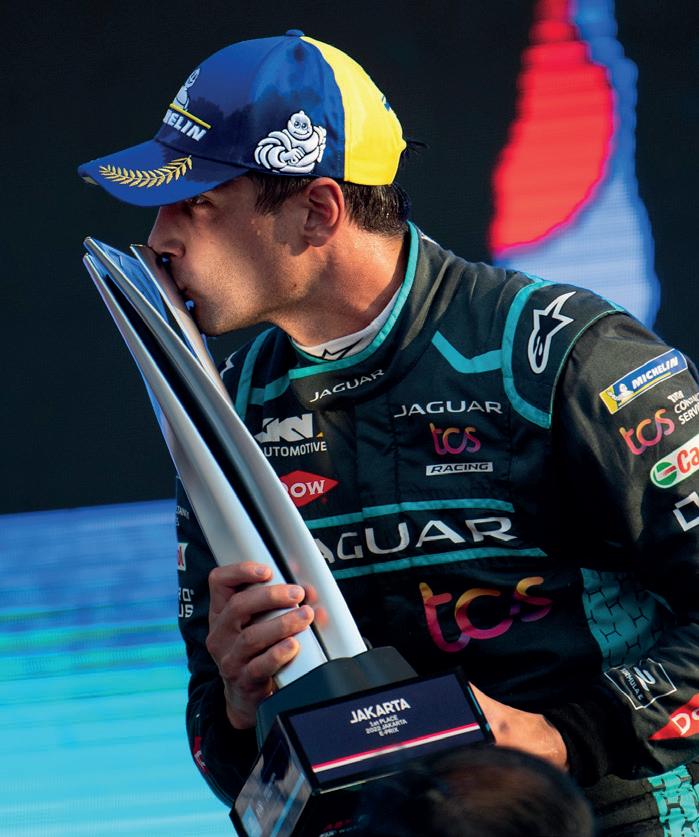
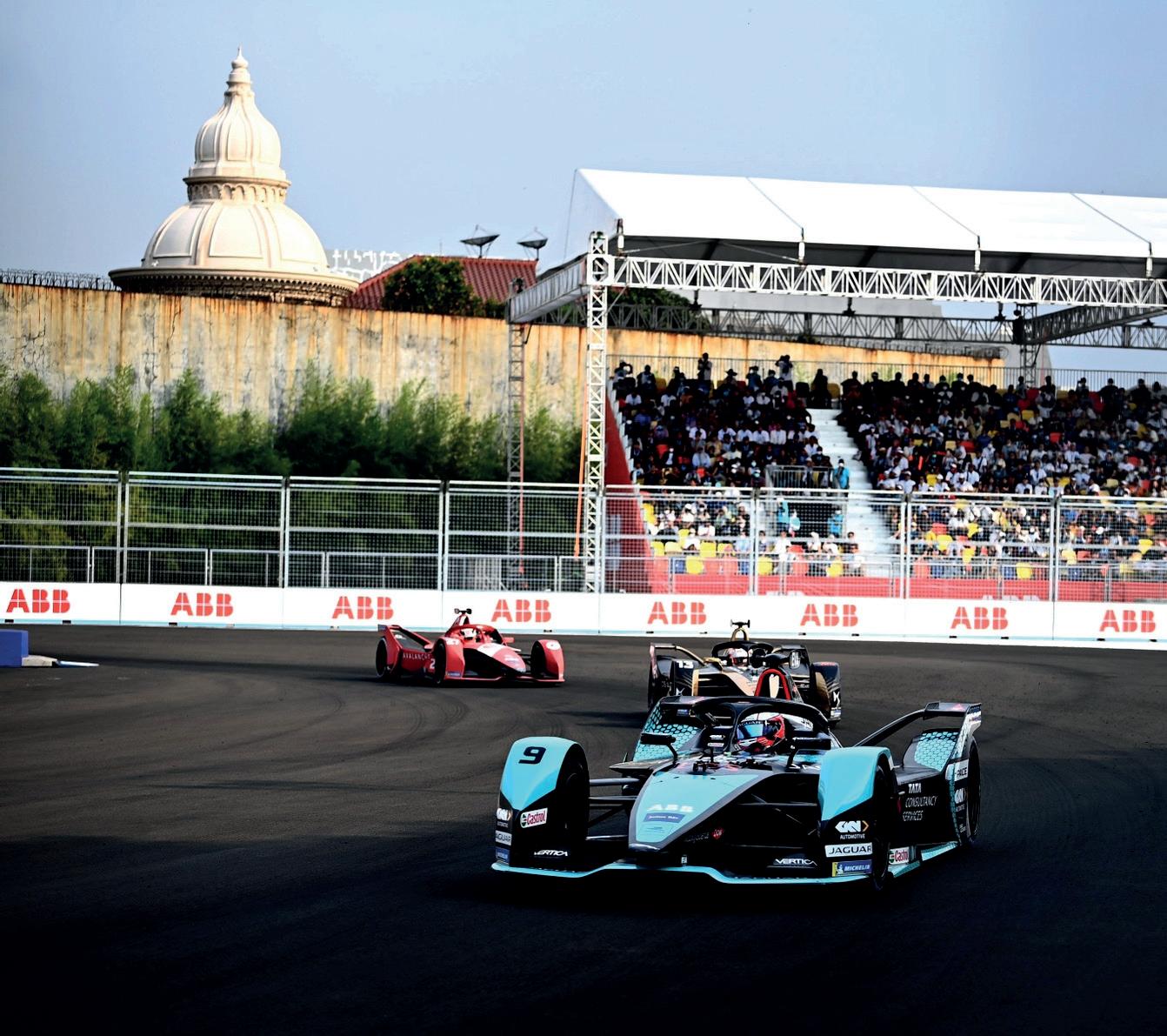
Jaguar TCS Racing’s Mitch Evans survived a late assault from
Vergne and Edoardo Mortara to claim his third win of the season the first-ever Jakarta E-prix.
Having started the race in third, Evans repeated his strategy from his backto-back wins in Rome by holding on to his final Attack Mode and deploying it towards the end of the race, allowing him to overtake DS Techeetah’s JeanÉric Vergne, who’s wait for a win this season continues.
The race got underway without much drama, until Mahindra’s Oliver Rowland lost a wheel and was forced to retire, an incident which brought out an early safety car. As the race resumed, both the DS Techeetah cars locked up in the same corner, and Mitch Evans capitalized on this by overtaking Antonio Felix Da Costa, who started in second place.
A little while later in the race, both the DS Techeetah cars activated their Attack Modes on the same lap, and Da Costa attempted to get past Evans, but the Kiwi held firm as he looked to reignite his Championship bid following a setback in Round 8 in Berlin.
Da Costa soon fell behind ROKiT Venturi’s Edoardo Mortara and had to battle with championship leader Stoffel Vandoorne’s Mercedes to keep hold of fourth place.
After losing the race lead while activating his second Attack Mode, polesitter Jean-Éric Vergne retook the race lead from Evans using the 13% extra power available. However, Mitch Evans still had an Attack Mode left in the bag which he reserved to use deeper in the race.
Once Evans had built up a sizeable lead to Mortara, the Jaguar driver took the plunge and triggered his final power boost and was able to rejoin the racing line in front of Mortara, and with his extra energy available, Evans began hunting Vergne down.
Although the Jakarta E-Prix got off to a relatively quiet start, the final few laps were filled with drama, with the front three all battling for top spot.
As Evans made his move on Vergne, dive bombing up the inside of the Frenchman, Mortara also became involved, looking for any chance to sneak past Vergne into P2. Whilst also trying to hold off the advances of Mortara, Vergne was still applying tons of pressure on Evans.
As the trio fought wheel-to-wheel for the last two laps, Evans came out on top as Vergne risked running out of energy and had to settle for P2, just ahead of Mortara.
While Vergne is still to win a race this season, this result saw him inch that much closer to championship leader Stoffel Vandoorne. Mitch Evans now sits in P3 behind Vergne, and Mortara in P4, with only 12 points separating the four drivers.
”That was a hot, hard race!” said Jaguar’s Mitch Evans after stepping down off the top step of the podium for the third time in Season 8 of the ABB FIA Formula E World Championship. “We had a nice strategy and the car worked well all day. To come to a new event, a new circuit and especially an aggressive climate like we got today, it’s very hard to get the car in the window for the whole race.

“I just want to say a huge credit to the guys here in the team because we just had a tough race but they gave me the goods this weekend, which is just what I needed when it’s so tight.”
ROKiT Venturi’s Edoardo Mortara said: “We had a good race in Jakarta today. Qualifying was already very good and then we had an intelligent race, which was very difficult with the temperatures being so hot and humid.
“To manage the tyres and the battery was not easy today, but we managed it and, at the end

of the race, I could see that they were fighting in the front. I was part of that fight and I was hoping for some kind of move from Vergne to be able to gain some places but unfortunately it didn’t come.
“Still, I’m extremely happy with another podium. That was the plan. We crossed the line with 0.0% energy - if you exceed a certain number, the power goes down, so the goal is actually to get that down to the line, just like we did. I could see that I had a little bit more energy reserved than Mitch but I could not pass.”
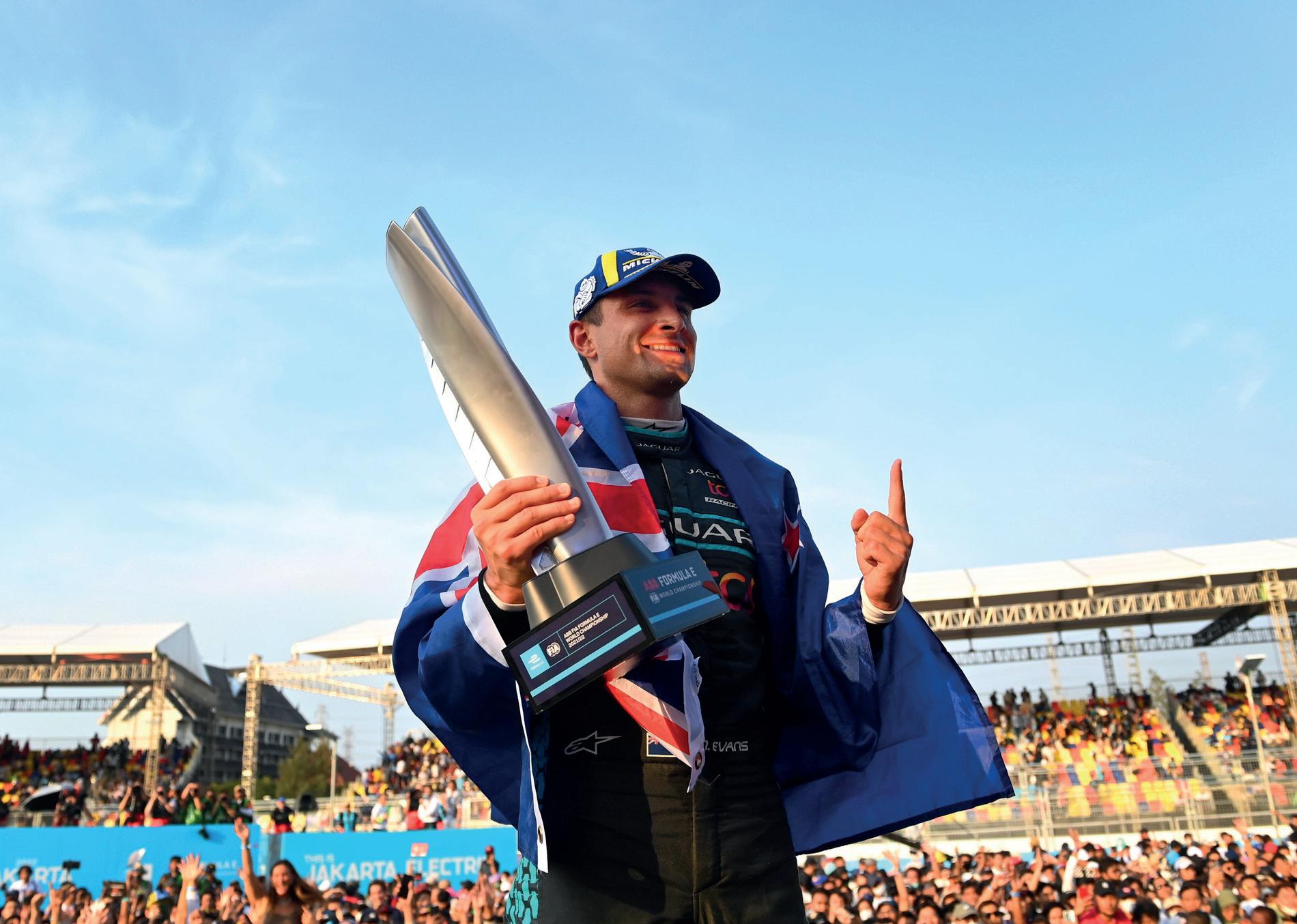
Extreme E’s fleet of electric SUVs are gearing up for battle once again as the series prepares for Rounds 2 and 3 of the World Championship this year after a five-month break. The teams’ and drivers’ will take over the military site in Capo Teulada, located in southwest Sardinia, on the 6th-7th July before repeating all the action on the 9th-10th July.

The Island X-Prix was due to be held in May but was rescheduled as a result of the Ukraine crisis,
The start of the course provides a unique opportunity for the drivers, with a multi-lane section offering very different approaches before the cars rejoin and resume battle. Doing their homework on the course will form a crucial part of team preparation, as the optimal combination of speed and distance could prove elusive.
Having rejoined the main course, the drivers will take a sharp left and traverse a more open, but bumpy plain. Another left followed by a right will take the all-electric SUVs over one of the small inland hills, before a fast, downhill section leads them into the first of two water splashes. Small trees and
with the Italian military occupying the site for training exercises. The venue was also chosen for a double-header to replace the Ocean X-Prix, that was due to be held in either Senegal or Scotland.
Sardinia hosted the Island X-Prix last year, with the venue introduced as a last-minute replacement for the Amazon X-Prix in Brazil, which had to be rescheduled due to the COVID-19 situation in South America.

Rosberg X Racing made it three wins from four races at the Island X-Prix last year, helping the team on its way to claiming the very first Extreme E World Championship. RXR drivers Johan Kristoffersson and Molly Taylor managed the rocky, dry terrain the best to claim the win, battling an undulating circuit with hot and humd temperatures throughout the weekend.

bushes form the scenery of the next section of the course, which the cars will carve their way through before dipping their Continental tyres in the water for a second time.
The course then winds its way through narrow turns and over more inland rises, before heading out to one of the fastest sections. This long, flat run down to a tight ninety-degree left turn will provide a good opportunity to exploit Hyperdrive.
More carefully navigated turns bring the drivers to the last section of the lap.
After a five-month delay, Extreme E returns in July as it hosts the first of two Island X-Prix’s on the Italian island of Sardinia.
A short, twisting portion is soon followed by a fast trip over the largest inland hill, where the ODYSSEY 21s are likely to go airborne. The drivers will then need to hit the brakes for a short but steep ten metre drop and another ninety-degree left-hander. A fast and flat section leaves just a final right turn to go, finishing off the striking seven-kilometre course of the Island X-Prix.

Rosberg X Racing got its title defence off to a perfect start when the second season kicked off in February with the Desert X-Prix. The Swedish pair of Mikaela Åhlin-Kottulinsky and Johan Kristoffersson secured maximum points in Saudi Arabia, holding off stiff competition the Spanish-duo of Laia Sanz and Carlos Sainz of the Acciona | Sainz XE Team.

Following the double-header in Sardinia, the series then heads to Chile for the Copper X-Prix in September, before the series finale in Punta Del Este, Uruguay in November.









With a number of new, exciting models on the way across the next few years, could Polestar be leading the way for the electric revolution? Charlie Atkinson reports.
Polestar is entering a new era. For a brand that’s origins began in racing all the way back in the late 2000’s, the Swedish manufacturer became the official Volvo partner in 2009, before being completely taken over in 2015. Only two years later, Volvo Cars and Geely Holding made the decision to set Polestar free and for it to become its own standalone brand. It hasn’t looked back since.
Polestar first entered the market with its plug-in hybrid Polestar 1 back in 2017, but the manufacturer soon entered the fully electric world with the release of the Polestar 2 in 2019.

With a slick design, battery sizes up to 78 kWh and a range of 245 miles, it was a car that was, and still is to this day, highly regarded. But that was before, and now Polestar is turning the page and entering a new chapter.
It has been a story of continuous success for Polestar so far. Having delivered on its global sales target of 29,000 vehicles in 2021, the company targeted rapid expansion in 2022 with plans to be present in 30 global markets by the end of the year.
Polestar launched its 25th global market in the
first half of 2022, a significant increase from 10 markets in 2020. Polestar has added six new markets since the start of 2022, including UAE, Kuwait, Hong Kong, Ireland, Spain and Portugal. The company also plans to launch in Israel and Italy in the second half of 2022, adding to its Middle East and European footprint. By the end of 2023, Polestar plans to be present in an aggregate of at least 30 markets globally, while continuing to evaluate new market opportunities for the future.
Thomas Ingenlath, CEO of Polestar, said: “Selling already in 25 countries across the globe, Polestar has a unique position in the pure play EV market. We are a real company, not one based on slideshow promises. More than 55,000 Polestar cars are on the roads globally today and we are launching a stunning portfolio of three new models in just three years. These gorgeous EVs are all in advanced development stages, and we

Continue onto next page
have the ability to produce great quality cars with our experienced industrial partners.”
It has built a solid foundation on which to build on, but what is next for the company?
Unsurprisingly, the next car to be unveiled by Polestar is the imaginatively named Polestar 3. The world premiere of the new electric vehicle will be in October this year and it will be the brands first SUV.

Scheduled for release next year, the launch of the car marks Polestar’s entrance into one of the highest margin and growth segments in the automotive industry, particularly in the United States.

According to the manufacturer, the Polestar 3 will, over time, offer autonomous highway piloting powered by the best-in-class LiDAR sensor from
Luminar and centralized NVIDIA computing power. At launch, Polestar 3 will feature a dualmotor drivetrain and a large battery, with a range target of over 600 km (WLTP).
“Polestar 3 is the SUV for the electric age. Our design identity evolves with this high-end large luxury EV, with a strong, individual brand character,” said Thomas Ingenlath, Polestar CEO.

“With this car, we bring the ‘sport’ back to the SUV, staying true to our performance roots.
“This is a major milestone for our company, one that boosts our growth trajectory and takes us into our next phase.”
Whilst attention is firmly set on the Polestar 3, the manufacturer has also teased the release of a new SUV coupe, the Polestar 4.
Disguised under a thin white sheet, details of the Polestar 4 are few and far between but the image does suggest a tapered roofline with a redesigned rear end from the Polestar 3. Polestar 4 is expected to be launched in 2023 as the manufacturer prepares to go to war in the most competitive market segments in terms of demand, performance and design.
Mike Whittington, Head of Global Sales at Polestar, said: “It’s exciting for the whole team to experience this growing momentum in our business. Our order intake is at record levels and currently represents an annualised run-rate of over 75,000 vehicles, putting us in a strong position as the production landscape normalises. In addition, with both Polestar 3 and Polestar 4 on the horizon, we are set to play a leading role in the electrification of lucrative and sizeable premium SUV segments. With a 2025 production capacity for these two EVs expected above 160,000
vehicles per year, we will have the ability to scale quickly and attract new customers to the brand.”
The last car on the lineup of teased Polestar models is the highly anticipated Polestar 5. The development of this electric vehicle has been well documented by Polestar, with its YouTube documentary series “Precept: from Concept to Car” detailing the progress and design direction of the fully electric performance 4-door GT.
In the docuseries, key production features are revealed, such as the cars bespoke, bonded aluminium platform. Bonded aluminium is lightweight and rigid, yet the new materials and techniques involved are expected to make the car weigh less than that of cars in smaller segments, contributing to improved vehicle efficiency, realworld EV range and dynamic responsiveness, all while delivering leading safety levels. The new bonded aluminium platform will also help drive faster product introduction, high quality and platform rigidity.
“We knew we wanted this car to be light-weight, we knew we wanted high quality and we knew we wanted it quickly,” says Pete Allen, Head of Polestar UK R&D. “This architecture delivers outstanding dynamic and safety attributes, with low investment technology applicable to high production volumes.”
Polestar 5 is now in advanced stages of development and is planned to be launched in 2024. A prototype was also shown for the first time at the 2022 Goodwood Festival of Speed from in June, along with a limited-edition Polestar 2 BST edition 270.
At Goodwood, Polestar also debuted a new powertrain for Polestar 5 for the very first time. In Sweden, development of the new top-of-the-line electric powertrain is ongoing. A new rear electric motor will provide superior output, along with 800Volt architecture. Combined with a high-output front electric motor, the complete dual motor powertrain aims to deliver 650 kW (884 hp) and 900 Nm.
Jörg Brandscheid, Polestar’s CTO and Head of R&D, said: “The new powertrain we are working

on will set a new brand benchmark in our highperforming cars. Combining strong electric motor engineering ability with advances in light-weight platform technology is leading to truly stunning driver’s cars.”

Along with the other production EVs that are currently in development and production, Polestar has revealed a new concept car that “redefines sports roadsters for the electric age.” Named Polestar O2, the hard-top convertible is Polestar’s vision of open-top performance.
“Polestar O2 is the hero car for our brand,” claimed Thomas Ingenlath, Polestar CEO. “It opens the door to our secret chamber of future potential. This is a taste of what we can design and engineer with the talent and technology we have in-house. It looks incredible, and being able to lower the roof and not hear an engine promises a superb sensation.”
The most distinctive element of the Polestar O2 is the autonomous cinematic drone integrated behind the rear seats. Developed in collaboration with Aerofugia’s consumer electronics brand Hoco Flow, the concept drone can be deployed while the car is moving, to record the “perfect driving sequence.”
Polestar engineers have developed a specialised aerofoil that raises behind the rear seats to create a calm area of negative pressure that allows the drone to take off when the car is on the move. The drone operates autonomously, automatically following the car at speeds up to 90 km/h.
“We wanted to emphasise the experience you can have with a car like the Polestar O2 in new and unusual ways,” said Maximilian Missoni, Polestar’s Head of Design. “Integrating an autonomous cinematic drone was something that allowed us to push the boundaries on the innovation front. Not needing to stop and off-load the drone before filming, but rather deploying it at speed, is a key benefit to this innovative design.”
Asides from the autonomous drone, sustainability is at the heat of the Polestar O2. A new thermoplastic mono-material features extensively in the interior, and recycled polyester is the sole material used for all the soft components of the interior.
In terms of design, the O2 features a compact 2+2 cabin design with a low and wide body, minimal overhangs and a long wheelbase. “This car is a meeting point between technology and art, between precision and sculpture, with a determined but not aggressive stance,” added Maximilian Missoni. No specific details have been confirmed for the Polestar O2 just yet, with the brand not cementing any plans beyond 2025. However, Ingenlath did suggest the intention to turn this concept car into a production model at some point in the future, so watch this space.
As well as its progress and ambitions with new electric vehicle models, Polestar has also made significant strides in the battery technology industry, having teamed up with extreme fast charging innovator, StoreDot.
StoreDot is pioneering the development of silicondominant extreme fast charging batteries for electric vehicles. The Israel-based company aims to produce batteries for EVs capable of charging up to 160 km of range in just five minutes, by 2024.
As part of the strategic deal, Polestar is collaborating with StoreDot to explore adapting and applying their technology to proof-of-concept Polestar cars. Test cases already being explored include customising StoreDot’s cell technology for Polestar cars, to enable faster charging and improved circularity.
Commenting on the partnership, Thomas Ingenlath said: “Charging and range anxiety are common concerns holding owners of combustion engine cars back from making the switch to EVs. StoreDot’s advanced battery technology potentially provides real solutions to these obstacles. If our current pilot projects with StoreDot are successful, we could see these solutions being implemented in Polestar cars by 2026.”
With four exciting electric vehicles on the way over the next few years and with the company solidifying its position in the fast-charging market, Polestar has outlined its intentions to establish itself as one of the major players in the electric vehicle market.
The next few years will be interesting, not just from Polestar’s perspective but for the electric vehicle industry as a whole, with the majority of manufacturer’s placing electric vehicles at the heart of their strategies.


There will be increasing competition for Polestar, but that is nothing new. The Polestar 2 entered the market and competed with the prestigious Tesla Model 3 and held its own. Even after its release in 2019, the Polestar 2, the brands only fully electric model available today, continues to impress amongst a growing list of EVs.
Polestar has formed a strong platform to build off over the past few years, and now, with a number of interesting and innovative models on their way, the Swedish brand is ready to take over. As I said at the start of this feature, Polestar has entered a new era, and it is one to be truly excited about.
Polestar has entered a new era, and it is one to be truly excited about. ”

Over the past year, the EV charging industry has sat up and started to take notice of the need for accessibility in the infrastructure being rolled out across the UK. Whilst we are still at the start of this journey, as an industry we need to consider whether we are doing enough, and whether many accessibility features are currently being
According to Disabled Motoring UK, the charity which supports disabled drivers, passengers and Blue Badge holders, there are currently 2.3 million disabled motorists in the UK and this figure is expected to rise to 2.7 million by 2035. These figures are an absolute minimum as they do not include those with mobility impairments who are not registered as disabled or accessibility considerations for parent and child needs.
Businesses and organisations are governed by the Equality Act 2010. To date, every client I have worked with on potential new charging point sites has been subject to this law. A mobility impaired person can quite rightly expect that positive steps are taken to remove any barriers that they would not otherwise face was it not for their disability. As far as is possible, a mobility impaired person should be able to have the same services delivered to them as someone without any disability. The Equality Act 2010 calls this the duty to make reasonable adjustments.
If it is reasonable to do so, then adjustments must be made to EV charging infrastructure to accommodate mobility impaired users. Each
seen as a wish list rather than an essential requirement.
It is estimated there are currently 30,000 public charge points in the United Kingdom, and by 2030 the government has targeted the industry to deliver 400,000 units to meet the expected demand from drivers adopting EVs.
installation needs to consider, ensuring a range of disabilities are kept in mind, the following:
• How practical it is to incorporate changes to standard charging points; for example, having sufficiently long and wide spaces may not always be possible given site limitations.
• If such changes would overcome the disadvantages mobility impaired people experience.
The size of the organisation providing the charging points.
• The money and resources available for the project.
• The cost of incorporating the required changes, which should ordinarily be at an acceptable level for most installations. However, it is important that these added costs do not deter organisations from rolling out electric vehicle charge points.
Businesses and organisations that want to install new EV charging infrastructure need to consider many aspects beyond the current hardware, environmental and power related obstacles that currently exist.
Businesses and organisations that want to install new EV charging infrastructure need to consider many aspects beyond the current hardware, environmental and power related obstacles that currently exist.
Hardware design must consider the height of both the sockets and any displays to ensure accessibility for all users. Kerb height and appropriate surfaces surrounding the charge point also must be addressed. Gravel, bark and other materials surrounding the concrete base for aesthetic purposes can often be seen, but it is important that the base is large enough for a wheelchair to move and turn. Barrier protection and road stops are often used to help protect the charge point from accidental damage. Ensuring these safety measures do not inhibit access to the charge points is essential.
For DC charge points with tethered cabling, the weight of the cable and its usability need to be assessed for all users. Cables are also often left
trailing on the floor which may inhibit users in an adjacent space; some careful consideration should be given to try and minimize these issues.
Drivers need to be able to find the appropriate bay for their needs. This might need a combination of floor marking and signage. This also helps ICE (Internal Combustion Engine) drivers find bays in which they should not park.
When designing a new installation, lighting must be a key consideration for all drivers, passengers and any third parties that may be near the infrastructure; it is beneficial for signage, trailing cables and the charge point itself to be clearly visible at all times of the day and night.
Whilst many chargers do not have contactless payment options and require an app or similar software solution, it is vital that this software is right for all users and offers immediate support.
The EV charging Industry should increasingly include the above in all new installations. In the next few weeks, the British Standards Institute (BSI) is expected to announce accessibility standards for EV charge points across the country. BSI has been commissioned by the Department

of Transport and Motability – a national disability charity. It is expected that the standards to be detailed by BSI will be guidance to the industry and EV drivers, providing clear definitions for public EV charge points, categorized as either:

• Fully Accessible
• Partially Accessible
• Not Accessible
The aim is to have more consistent standards so drivers can more easily find which charge points will meet their needs, regardless of their mobility. Now is the time for the industry to take the right steps to make sure that charging infrastructure is accessible for all – reducing the barriers for people living with disabilities to use and charge electric vehicles in public locations.
It might look like the XC40 Recharge, but Volvo’s second fully-electric vehicle, the C40 Recharge, does have some differences. Charlie Atkinson got his hands on the brand-new Volvo to find out how the two compare.


As the names would suggest, Volvo’s all-new, fully-electric C40 Recharge is quite similar to the manufacturer’s other electric model, the XC40 Recharge. And I wonder if you, the reader, can spot the differences on the two pictures, taken in the exact same position. No? Well let me help you out...

Firstly, the whole shape and size of this car is much more sleek and streamlined. The XC40 was your traditional SUV; very boxy and upright, whereas this newer model is a bit more sporty. It’s slightly lower than the XC40 and it’s also a touch longer as well, so all of that makes it a bit more



coupé-like. At the right angle, the C40 Recharge doesn’t look a million miles away from the Ford Mustang Mach-E, which is quite the compliment.
Up close, you will notice the typical electric Volvo features such as the coloured grille and Thorhammer headlights, with a contrasting roof and
wing mirrors as well. The wheels, which are 19” as standard but can be upgraded to 20”, feature a funky alloy-display, and at the rear, you have your classic Volvo taillights with a very shallow spoiler, too.
It’s a decent job from Volvo in terms of the exterior, now what about the interior...
Inside the C40 Recharge, it’s a very similar story to the XC40 Recharge. Straight away, your eyes are drawn to the 9” infotainment screen which is powered by Google Assistant, which will offer drivers features such as built in Google Maps and the Google Play Store. Drivers with Android phones will be able to connect to Android Auto but, unfortunately, those with iPhones will have to wait as Apple CarPlay isn’t supported just yet. The Google services work really well, especially the voice activated Google Assistant (ask it to tell you a joke!).
The tech-suite also features wireless charging for your phone and a high-performance, HarmanKardon sound system, complete with eight different speakers. One of the highlights of the
interior is the 12.3” Progressive Driver Display which is crisp and responsive, and it offers you lots of different screens and information whilst you’re behind the wheel.

One big difference between the C40 and the XC40 is the fixed panoramic sunroof, as this is exclusive to the new C40 only. It’s a nice touch and helps fill the car with light since the interior is so dark and moody.


The fabric seats are reasonably comfortable and up-front you will be able to find your perfect seating position with the digitally adjustable seats. There is plenty of storage within reach, too, with huge door bins, two cupholders and a big centre console for all your smaller belongings.

You may struggle for comfort in the back, however, especially if you’re over six foot. Legroom is fairly
tight and there is hardly any headroom, so you’ll get a very good look at that panoramic sunroof I mentioned earlier. Thankfully, the C40 does redeem itself with a decent sized boot, with 414 litres available, as well as a further 31 litres at the front for all your wires and cables.
For our review, we were testing the Volvo C40 Recharge Twin, which features an upgraded 78kWh, up from a 69kWh battery on the standard version. This higher-spec model will deliver a 0-60mph time of 4.5 seconds, down from 7.7 seconds, as well as delivering 330Nm torque from two 204hp motors.
In terms of range, the C40 Recharge Twin offers an official WLTP range of 277 miles, and thanks to its fast-charging capabilities, it is able to recoup 10 to 80% charge in just under half an hour. As part of my test for this car, I drove from my home in Northampton to the ExCel Centre in London’s Docklands, a combined journey of 182 miles, and I returned home from my trip with 9% battery. In the real world, then, you can expect a range of just over 200 miles.
Now we’ve got all the facts and stats out of the way, what is the Volvo C40 Recharge like on the road?

Well, the answer to that question is pretty disappointing, in all honesty.
For a car that offers such attractive details such as a 4.5 second 0-60 time and 204hp from two motors delivering 330Nm, the Volvo C40 doesn’t exactly get the pulses raising. I understand that this is far from a sports car and it hasn’t been designed to be, but any electric car should put a smile on your face when you put your foot down, but this feels sluggish, safe and, quite frankly, boring.
Part of that will be as a result of the weight of this car – It’s quite chunky. Compared to the XC40 Recharge, the C40 is over 370kg heavier, so it’s no surprise that this feels a bit weighed down in comparison.
So, for a car that is big and heavy, it should at least have a relatively smooth ride, right? Wrong. This is by far the most disappointing aspect of the C40 Recharge. When it comes to a Volvo, you may expect it to be a little sensible and dull in

The Volvo C40 Recharge starts from £44,800, with the Recharge Twin Ultimate spec, the top end of the C40 range, coming in at £58,900. This makes it more expensive than the top spec Audi Q4 e-tron, which has an on the road price of just over £57,500.


Whilst the C40 certainly looks the part and offers a decent range, it has some fairly significant flaws, which makes it hard to justify paying this price when, for the same money, you could get an Audi Q4 e-tron which sits fairly comfortable at the top of the electric SUV tree.
“
It is a shame that the C40 has failed to live up to its expectation. Volvo had made a huge impact in the EV world with the release of the XC40 and hopes were high for its second electric vehicle, but it is all rather underwhelming. For a car that many looked forward to, I’m afraid to say that the Volvo C40 will most likely be forgotten and left behind as the EV revolution rolls on.
terms of speed, but you do expect comfort and elegance, but this is anything but. On anything but a perfectly smooth road surface, you feel every bump cannon through the cockpit, shaking
and thrashing you about as if you are taking part in the Dakar Rally. For a car of this shape and size, it really is astonishingly uncomfortable to drive at times.
Volvo had made a huge impact in the EV world with the release of the XC40 and hopes were high for its second electric vehicle, but it is all rather underwhelming. ”


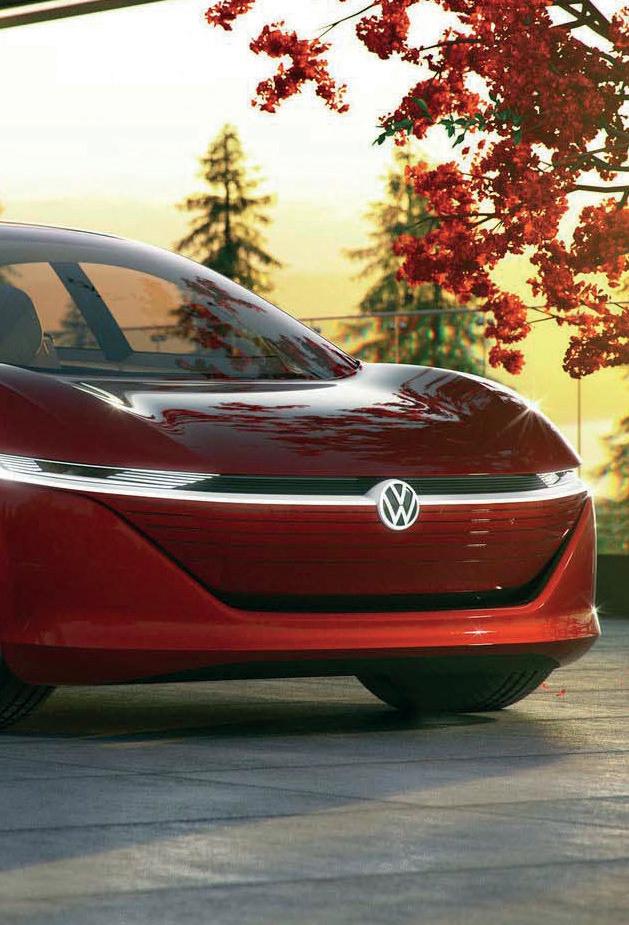
Here’s our list for the ten most exciting electric vehicles scheduled for release next year, including the first ever electric Maserati and an EV with a 0-60mph time of less than two seconds!
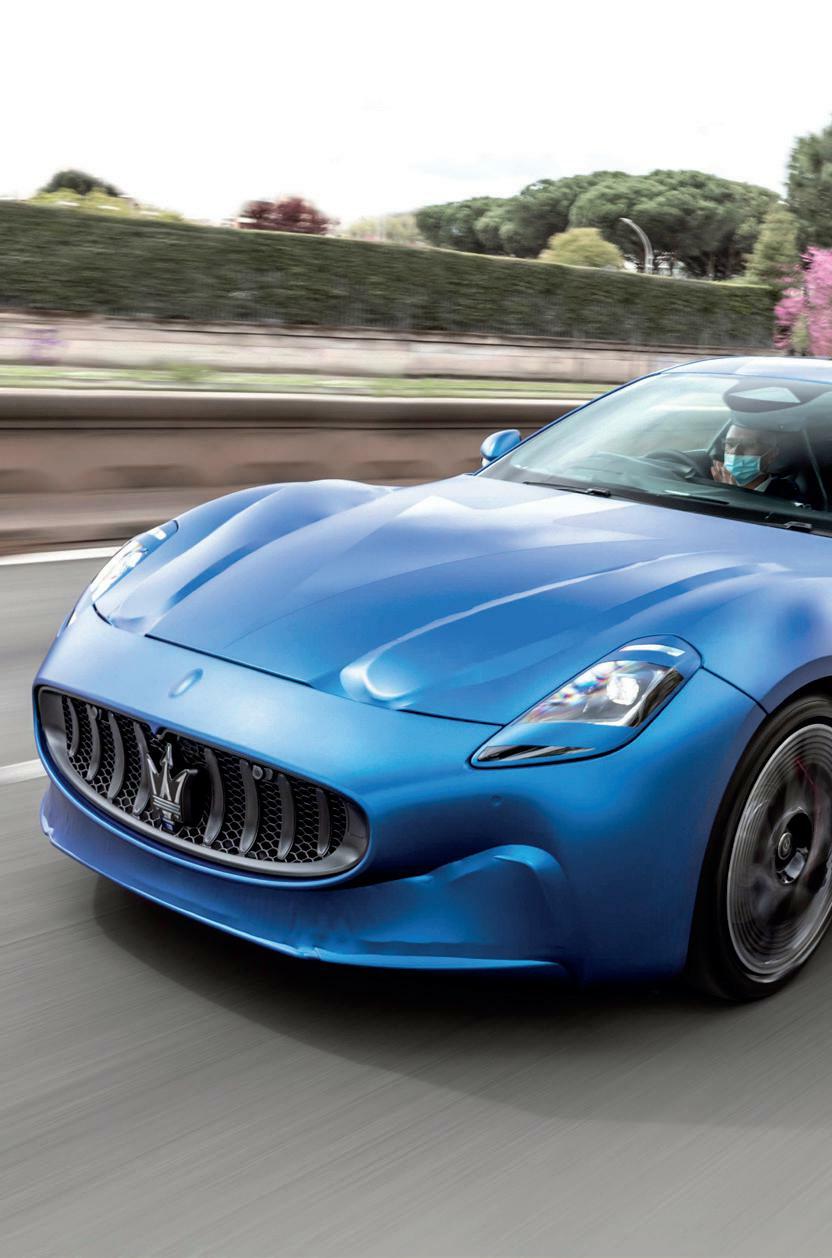
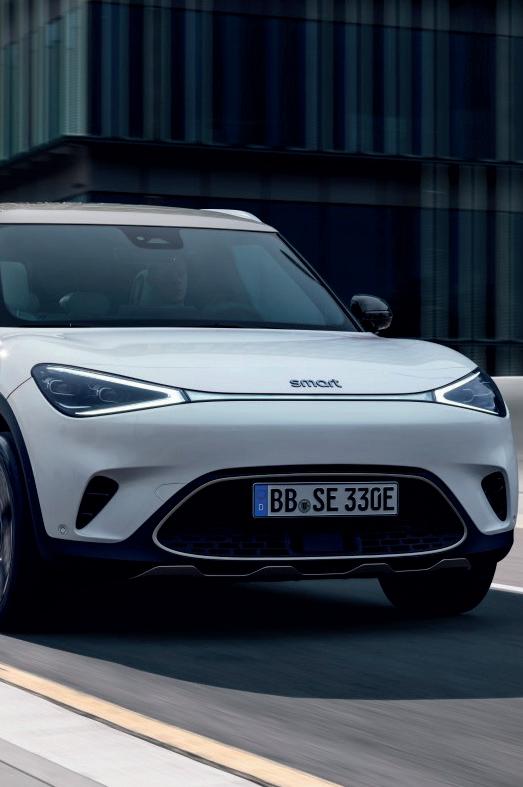

Jeep will be embarking on its very own electric adventure next year as the brand releases its first ever fully-electric vehicle. The EV, which has yet to be named, was announced earlier this year by Stellantis CEO Carlos Tavares and is expected to sit below the Renegade in terms of size. Details on the vehicle are few and far between at the moment but
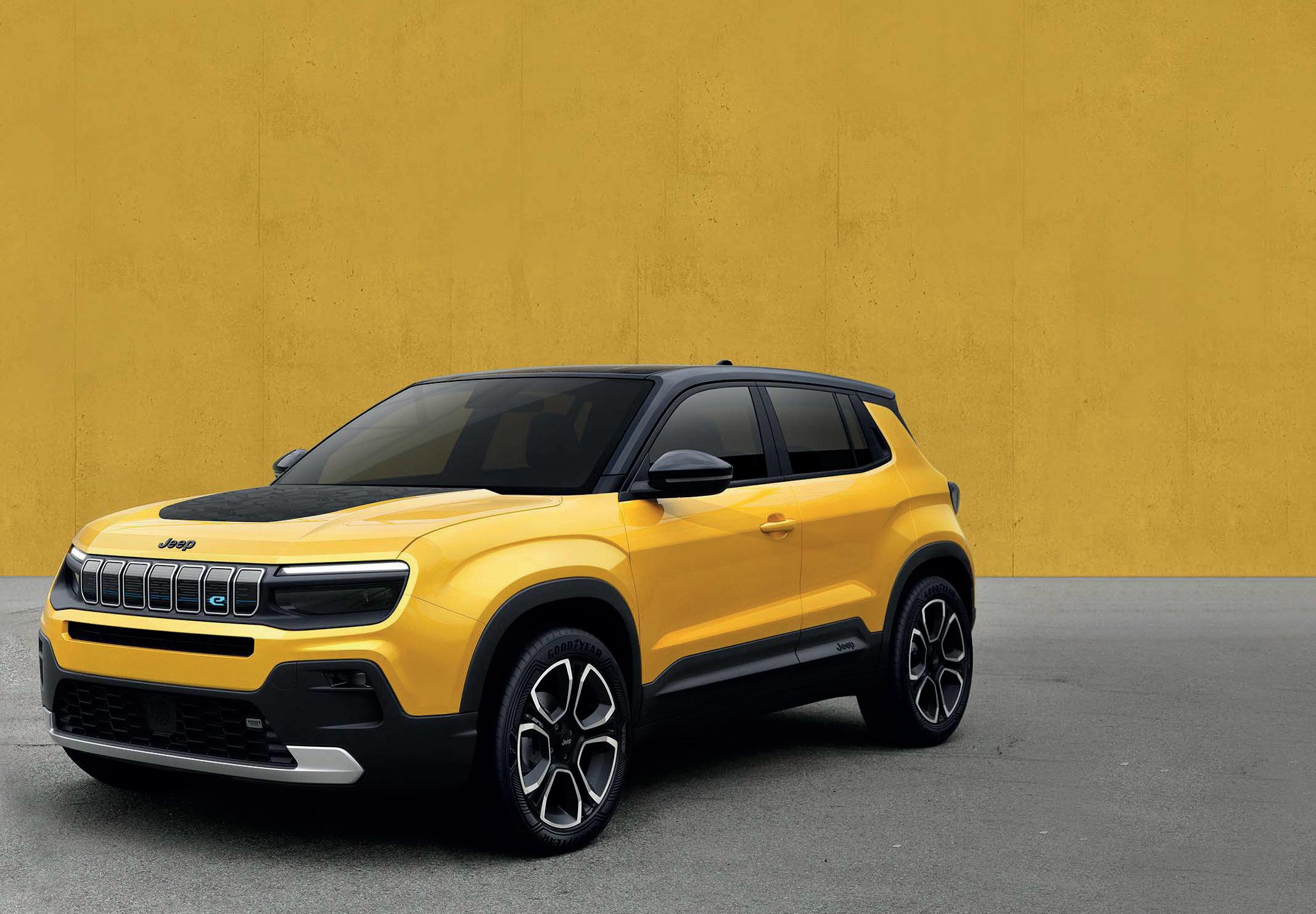
the electric Jeep will be available from the first half of the year, it has been confirmed. “Electrification will amplify Jeep’s core attributes,” said Tavares. “This new model will launch during the first half of next year and is the first of a comprehensive fully-electric Jeep line-up that will cover every SUV segment by 2025.”
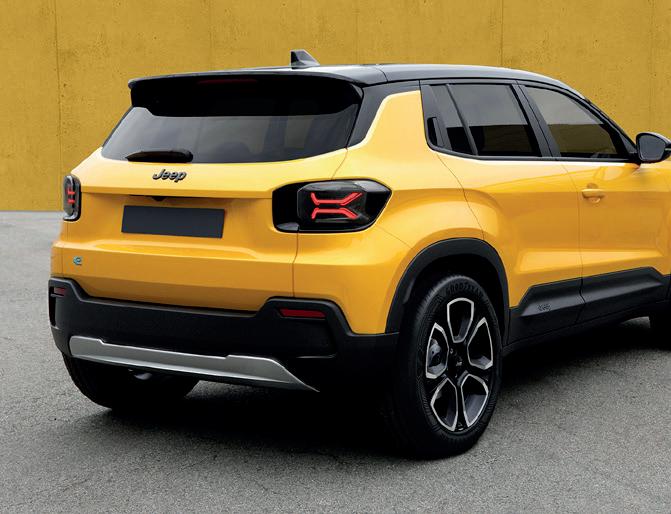
The forthcoming Polestar 3, an aerodynamic electric performance SUV, will be the next release from the Swedish EV manufacturer, following the success of the prestigious Polestar 2. Polestar 3 will debut the new generation of electric vehicle architecture from Volvo Car Group, which has been designed from scratch for full electrification. The aerodynamic
electric performance SUV will feature industry-leading connectivity features based on Google’s native Android Automotive OS infotainment system, as well as high-end, safety-focused autonomous driving features. Production of Polestar 3 is expected to begin globally in 2022, with more details on the vehicle to be announced later this year.

Audi’s latest electric offering, a swanky, fully-electric SUV, could be released towards the end of this year, although a 2023 release looks more likely, with the new EV only having just been spotted in testing. The Q6 e-tron is expected to have a range of around 400 miles with a 100kWh battery with 270kW fast charging capabilities. In terms of pricing, the Q6 e-tron is expected to go on sale for around £60,000, but details will be confirmed later this year.



Following in the footsteps of the renowned Ioniq 5 is no easy feat, but Hyundai will be looking to replicate its global success with the release of the latest member of the Ioniq range. An all-electric family saloon, the Ioniq 6 has been spotted out and about, with a few shots of it semicovered having been released. However, you can see that the Ioniq 6 will feature Matrix LED headlights and a new design for the diamondcut 20-inch alloy wheels. As with a lot of the cars on this list, specific
details have not yet been released, but the Ioniq 6 could well feature 76.2kWh battery. 2023 is set to be an important year for Hyundai and its electrification goals, as the manufacturer is also set to release its Ioniq 7 SUV towards the end of next year as well. This large SUV will not only offer a range of more than 300 miles, but it is also expected to showcase Hyundai’s advancements in self-driving technology, too.
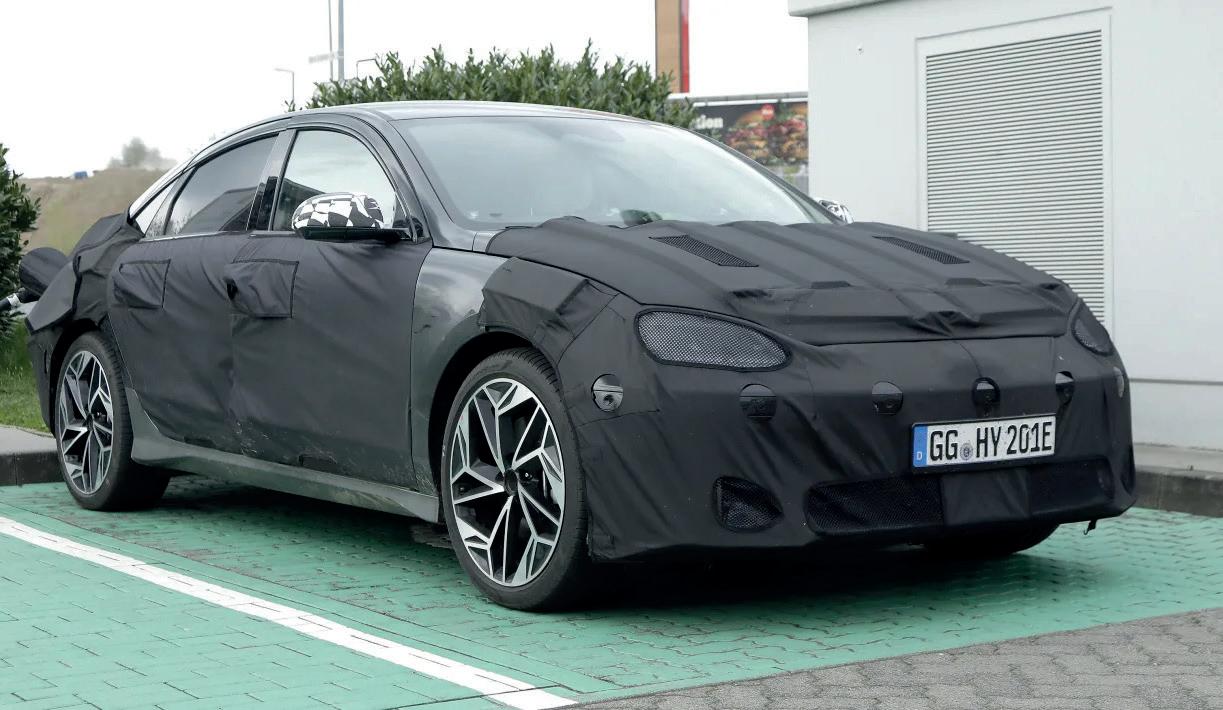
Kia is set to release its first electric SUV next year, with the South Korean manufacturer unveiling details of its Concept EV9 back in March. “The Kia Concept EV9 is another important marker for us in what has been an incredible journey so far for the new Kia brand,” said Karim Habib, Senior Vice President and Head of Kia Global Design Centre. “In the Concept EV9, we are showcasing how the SUV of today can evolve to play a fundamental role in
the sustainable mobility era. The nucleus of the Concept EV9 is a cutting-edge exterior design, a contemporary and innovative tech-based interior space and an advanced all-electric powertrain. And these are the core principles that will shape our future SUV creations.” A production version of Concept EV9 is now confirmed for Europe in 2023 and will build on the success that the acclaimed EV6 crossover has achieved since its launch last year.


Maserati is to become the first Italian luxury car brand to produce fullelectric models, as it prepares to unveil its electric range, Maserati Folgore. The new GranTurismo will be the first car in Maserati history to adopt 100% electric solutions. Made at the Mirafiori production hub, it will debut in the market in 2023. The new GranTurismo will offer technical solutions derived from Formula E, as well as “superb performance,
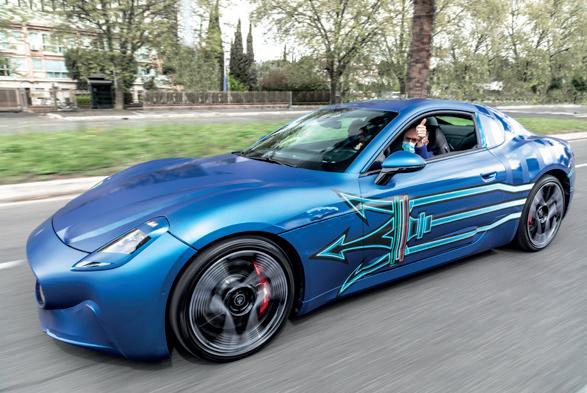
comfort and elegance, all typical of the Trident.” Next year, the all-new Grecale SUV will also become available in an electric version. Maserati’s plan is part of the Stellantis “Dare Forward 2030” strategic plan, and as part of this, all the brands models will be developed, engineered and produced 100% in Italy, and will be adopting electric powertrains.
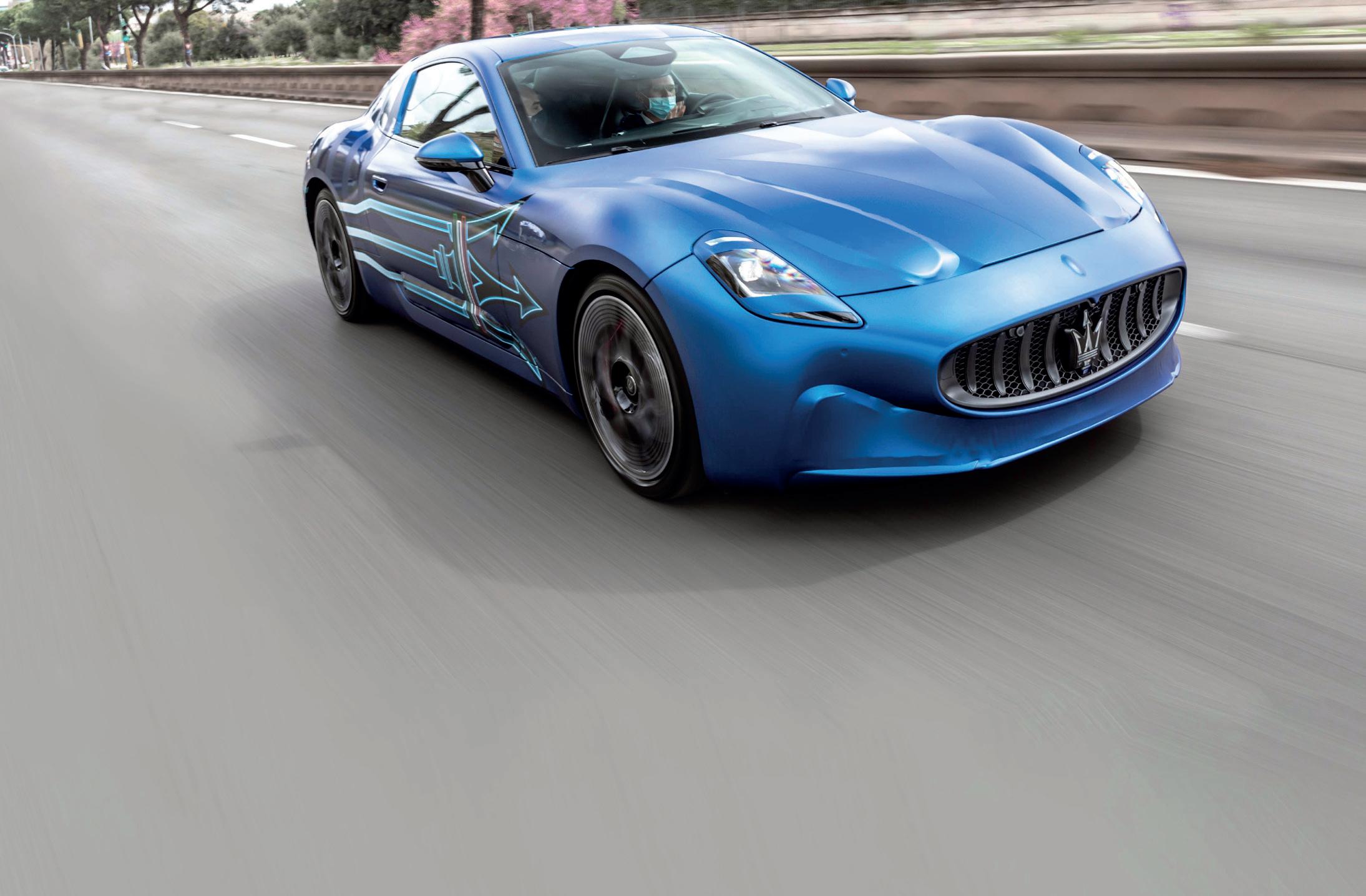
American electric vehicle automaker Fisker is gearing up for the launch of its first electric vehicle next year, the Fisker Ocean. The all-electric SUV recently made its European debut at Mobile World Congress in Barcelona. The five-passenger Fisker Ocean Sport features a range of 275 miles (WLTP estimate) with a starting price of £34,990 in the UK (incl. VAT, excluding subsidies). The top trim Fisker Ocean Extreme travels 390 miles (WLTP estimate) on a single charge with dual-motor AWD, three driving modes and a host of first-to-market safety features. With the


The all new Smart #1 SUV is set to be the largest Smart vehicle to date, with this quirky, boxy EV marking the start of a new era for the Smart brand. With the order book for this vehicle opening from December, the #1 will offer over 270 miles of range and 150kW fast charging capabilities. Smart will also be releasing a special Launch Edition model, which will be be painted white with a gold roof to incorporates an intricate chequered pattern. It will also be equipped with 19-inch Prism alloy wheels, along with a number of

distinctive trim colors and two-leather leather highlights inside. “The smart #1 represents the start of a new era for our brand,” Smart chief executive David Browne said. “Its comprehensive offering of outstanding design, exceptional space utilization and connected solutions is confidenceinspiring to customers and is a strong signal of intent for our product portfolio moving forward. Our Launch Edition offers customers an exclusive opportunity to be the first to experience our vision for a new generation of fully electric urban mobility when it hits the road mid-next year.”
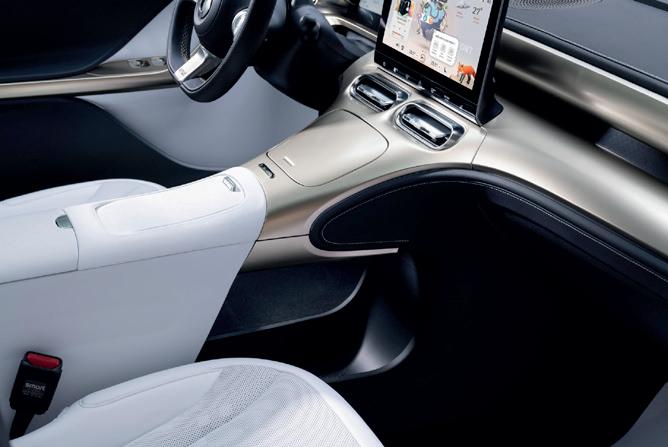 Fisker Ocean’s revolutionary full-length SolarSky roof, the vehicle can harvest the sun’s rays to generate free energy to support the vehicle’s battery-powered motor. When fully exposed to the sun, the Fisker Ocean Extreme’s SolarSky can produce up to 1,500 clean, emissions-free miles per year, and under ideal conditions may increase to beyond 2000 miles. CEO Henry Fisker has stated that he expects deliveries to Europe to begin this year, however the official release of the Fisker Ocean is scheduled for 2023.
Fisker Ocean’s revolutionary full-length SolarSky roof, the vehicle can harvest the sun’s rays to generate free energy to support the vehicle’s battery-powered motor. When fully exposed to the sun, the Fisker Ocean Extreme’s SolarSky can produce up to 1,500 clean, emissions-free miles per year, and under ideal conditions may increase to beyond 2000 miles. CEO Henry Fisker has stated that he expects deliveries to Europe to begin this year, however the official release of the Fisker Ocean is scheduled for 2023.
The Tesla Roadster is perhaps the most highly anticipated electric car on this list, but thankfully, there isn’t too long to wait, with Elon Musk confirming that the Roadster is scheduled to enter production in 2023 — likely after the launch of the Cybertruck. According to Telsa, the Roadster will be the quickest car in the world, with record-setting acceleration,



range and performance. Not only will it offer a 0-60mph time of 1.9 seconds, it will also boast a top speed of more than 250mph and a range of over 600 miles. The base reservation price of the Roadster is listed at £38,000, so expect this to be one of the most premium cars in the world.
A new addition to the ID. family is also scheduled for next year, with the Volkswagen ID. Vizzion scheduled for next year. One of the key features of the Vizzion will be autonomous driving, with 8,000 individually controlled LEDs, the HD matrix headlights can project virtual zebra crossings onto the road to let pedestrians know they can safely cross.
The EV will also champion virtual reality, with drivers supposedly able to control everything intuitively with gesture control and voice commands. The controls are all virtual. The only way you can see them is with mixed reality glasses... Yes, really.


As of last month, all new homes and buildings such as supermarkets or workplaces built in England, are required to have electric vehicle charging points installed. Not only will this make it far easier for residents of new build homes to run an EV – they will also have the option to rent their charger out to help their neighbourhood go greener and earn additional income.
Alex Johnstone, an IT specialist from Whitley Bay, Tyne and Wear said: “I live in a new build property and was keen to run an EV. I’ve got a Jaguar i-Pace, which I love. In my case the property didn’t come with a charger, so I had to install my own. A lot of my neighbours live in flats and terraces and can’t have a charger, so I rent mine out via Co-Charger. The app handles the ‘matchmaking’, bookings, and payments. I can choose the rental price and am gradually earning back the expenses involved with installing my charger. I’ve already helped six motorists to charge their EVs. I think it’s good news that the government is making EV chargers mandatory in new builds as it will make it easier for residents to shift to an EV without paying charger installation costs upfront. They’ll also have the option to rent it out to their community regardless of whether they run an EV or even have a car at all.’

Joel Teague, CEO of Co Charger who is on the Electric Vehicles forum of the Renewable Energy Association, commented: “This new legislation will be ideal for residents of new build properties who want to run an EV. But the fact is some may prefer to stick with their petrol or diesel vehicle, choose not to have a car at all or maybe don’t even possess a driving licence. In any of these latter cases the charger, which is an expensive piece of equipment could be left gathering dust for years or even decades. Yet there are 14 million people in the UK who live in flats and terraces many of whom are desperate to get out of their fossil fuel vehicles but don’t have access to a charger of their own or accessible and reliable public ones. We need to take the emphasis off just purchasing more public chargers, which are expensive to install and maintain and make the most of home driveway chargers via neighbourhood charger sharing. It’s hoped that the new rules about EV chargers in new build homes will lead to the installation of an additional 145,000 charge points every year. If just 10% of these were rented out to neighbours that would mean an additional 14,500 charge points annually – without any additional holes being dug in the road or public money spent.”
charger sharing platform connects them via their app which handles the ‘matchmaking’, bookings and payments.

As we are all aware electricity prices are rising significantly. But by setting an appropriate price for the charger rental above the costs of provision the Host can make additional income. Prospective Hosts generally decide what to charge by assessing their own overall costs and also checking out what other local Hosts are asking. The Host is always in control and can arrange to accept bookings only at times that are convenient for them, such as when they can park elsewhere or are at work. And there’s no need for concern about having strangers on their driveway ‘Chargees’ will be neighbours who mostly make regular bookings.
Electric vehicle charger owners can become ‘Hosts’ by renting out their chargers to a few neighbours. ‘Chargees’ are motorists who need bookable, reliable, and affordable charging close to home. Co Charger, the only purpose-built EV
How renting out home electric vehicle chargers can help save the planet – and generate cash

For Steve Drummond, the story of Electrogenic does not begin with a love affair or fascination of electric vehicles, but rather a realization of the technology and the potential of the electric classic car market.
“The whole idea started about five years ago,” Steve explained on The Everything EV Podcast. “My colleague Ian tried to interest me in another old car and I said ‘oh it’s got another horrible old engine’ and he said we should make it electric, which I thought was a stupid idea.
“We did a whole load of research and went over to the States and realised, for the first time, it was possible to make an electric car that was worth owning. We thought we’d give it a go and converted a Beetle, and the whole business grew from there.”
Since the Beetle, the company has compiled a catalogue of completed classics, ranging from Land Rovers to Jaguar E-Types and even a fully electric Porsche 356 C. Yet Electrogenic’s work is not about completely transforming these iconic cars, but instead making them a better version of what they already were, as well as making them more reliable and easier to run.
Steve continued: “The thing about classic cars is it’s all about character. It’s the character of the car; the way it drives, the way it feels. Every time I get into a Beetle for example, I have a big smile on my face and I can’t help it, and that’s the same for a lot of different cars. They have their own unique character, and what we try to do is bring that out with the electric.
“The downside of owning a classic car is that they don’t work. Making them electric means you can keep the character but it’s reliable and easily accessible which means anyone can own one.”
The company has since established itself as one of the most trusted and prestigious EV conversion firms in the country. And whilst Electrogenic will always continue to reimagine classic cars from years gone by, Steve outlined the future of the company and the other ways in which the company will grow.

He said: “What we’ve managed to develop over the last five years is a really interesting suite of technologies, and so the future of the company is getting that into vehicles in many more ways, so not just converting them ourselves but providing kits for Land Rover‘s, Mini’s and MGs, that sort of thing.

“We’re building prototypes of electric versions of new cars for small manufacturers. It’s a lot of different ways of getting our technology into cars that are being built by other people. We’re always
going to carry on doing our core which is creating beautiful cars for customers directly because that’s what keeps us fresh, keeps us learning and keeps us current.”
As the industry of electrified classic cars grows, and with electric vehicles generally becoming more and more popular, could we one day see people choosing between a converted car and a brand-new EV from a major OEM? It’s possible, according to Steve.
“There are going to be a lot more opportunities to acquire an EV at a lower cost,” Steve explained. “We are working with a British manufacturer on a much lower cost motor that will go into small vehicles, to reduce the cost of conversion significantly. There’s not only a commercial pathway, there’s also a tech pathway - we look at the tech that’s on the horizon and start to plan that into what we’re doing. There are batteries coming through which are supposedly available commercially by 2025 which will reduce charge times to about 15 minutes, so that then massively increases the range of vehicles that are practical to convert and to have a good usability in terms of range. There’s lots coming and it’s going to make it more accessible.”
Scan the QR code to listen to this episode and be sure to subscribe to The Everything EV Podcast for new episodes every week.












